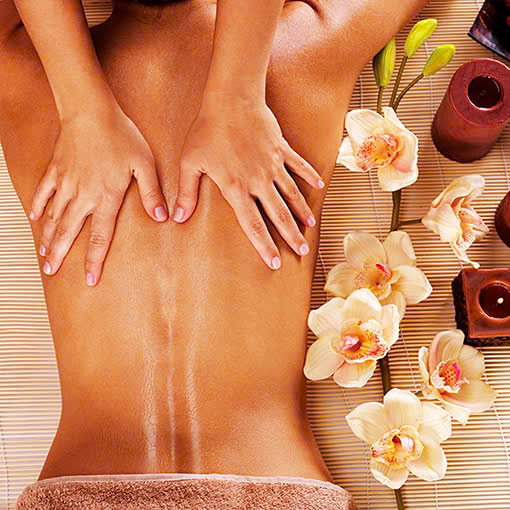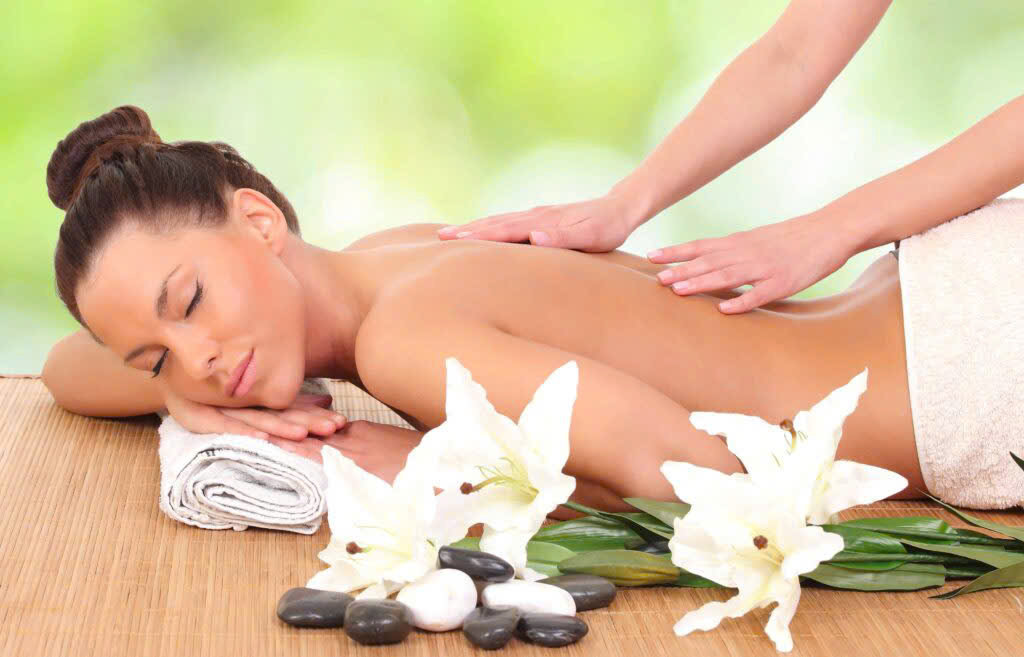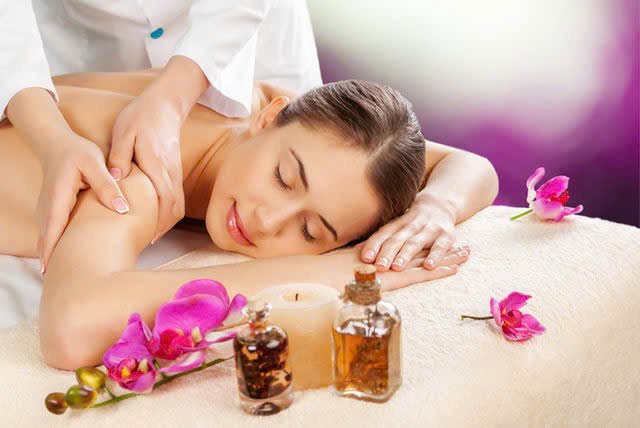Therapeutic Massage: Top 5 Incredible Benefits, Techniques & Mental Health Boosts
Therapeutic massage is an ancient healing practice that has been cherished across cultures for centuries. Today, it continues to be a highly valued complement to traditional medicine, promoting physical health, mental well-being, and overall relaxation. Therapeutic massage involves the systematic manipulation of soft tissues in the body to alleviate pain, improve mobility, and foster emotional balance. Whether you’re seeking relief from chronic discomfort or aiming to enhance your mental clarity, understanding what is therapeutic massage, its top 5 incredible benefits, and how it can improve mental health is essential.
In this comprehensive article, we will explore therapeutic massage: definition, types, techniques, and efficacy. We will delve into the various forms of massage, examine scientific research supporting its benefits, and provide insights into how regular therapy can transform both physical and mental health. Let’s begin with a foundational understanding of what therapeutic massage truly entails.

Therapeutic Massage
Therapeutic massage is more than just a relaxing spa treatment; it’s a purposeful process aimed at healing, rehabilitating, and maintaining health. It combines manual manipulation—such as kneading, rubbing, and pressing—to target specific issues within the musculoskeletal system.
This form of therapy can be tailored to individual needs, whether it’s relieving tension from stress, reducing inflammation, or restoring range of motion after injury. The holistic approach often integrates knowledge of anatomy and physiology, emphasizing the interconnectedness of mind and body.
In essence, what is therapeutic massage? It’s an evidence-based practice designed to promote healing at both physical and emotional levels, with practitioners selecting specific techniques suited to each client’s unique health profile. It’s an invaluable tool in preventative care, rehabilitation, and mental wellness strategies.
The Evolution of Therapeutic Massage
Historically, various cultures have practiced massage for healing purposes—from traditional Chinese medicine and Ayurvedic practices to Greco-Roman styles. Modern therapeutic massage synthesizes these traditions with contemporary science, emphasizing evidence-supported methods that optimize health outcomes.
Who Can Benefit from Therapeutic Massage?
Almost anyone can benefit from therapeutic massage, especially those suffering from chronic pain, athletes recovering from injuries, individuals experiencing stress or anxiety, and seniors seeking improved circulation. It’s a versatile modality that adapts to diverse health needs.
What is Therapeutic Massage?
What is therapeutic massage? At its core, it is a structured approach to manipulating soft tissues—muscles, fascia, tendons, and ligaments—to achieve specific health benefits. Unlike general relaxation massages, therapeutic massage targets particular conditions, focusing on alleviating pain, reducing stiffness, and enhancing function.
The primary goal of what is therapeutic massage is to facilitate the body’s own capacity for healing. This involves applying various techniques to increase blood flow, reduce muscle tension, and stimulate lymphatic drainage.
Additionally, therapeutic massage incorporates assessments of posture, movement, and muscle imbalances, allowing therapists to develop personalized treatment plans. It often complements other medical treatments and is used in physical therapy, chiropractic care, and sports medicine.

Differentiating Therapeutic from Other Types of Massage
While many people associate massage with relaxation, what is therapeutic massage emphasizes targeted interventions rather than purely pleasurable sensations. It tends to involve deeper pressure, precise strokes, and specialized techniques aligned with clinical objectives.
The Role of the Therapist
A qualified therapist assesses the client’s medical history, current symptoms, and lifestyle factors before designing the treatment session. Their expertise ensures that what is therapeutic massage remains safe, effective, and aligned with individual health goals.
Top 5 Incredible Benefits of Therapeutic Massage
The top 5 incredible benefits of therapeutic massage extend beyond simple relaxation. Scientific studies and practitioner observations reveal profound impacts on physical health, emotional stability, and overall quality of life.
1. Pain Relief and Management
Chronic pain affects millions worldwide, stemming from conditions like arthritis, fibromyalgia, and muscular injuries. Therapeutic massage offers significant relief by decreasing muscle tension, increasing circulation, and releasing endorphins—body’s natural painkillers.
Massage techniques such as deep tissue work and trigger point therapy specifically target areas of pain, helping to break the cycle of chronic discomfort. Regular sessions can reduce dependence on medication and improve functional mobility.
2. Enhancement of Circulatory and Lymphatic Systems
Efficient blood flow is essential for delivering oxygen and nutrients while removing metabolic waste. Therapeutic massage stimulates circulation, promoting faster healing and better organ function.
Furthermore, it enhances lymphatic drainage, which plays a critical role in immune response and detoxification. Improved circulation also relieves swelling and edema, especially beneficial for post-surgical or postpartum patients.
3. Reduction of Stress and Anxiety
One of the most immediate benefits observed during and after therapeutic massage is profound relaxation. It triggers the parasympathetic nervous system, lowering cortisol levels—the primary stress hormone—and boosting serotonin and dopamine, which are associated with happiness and calmness.
Massage provides a mindful experience, encouraging deep breathing and awareness of bodily sensations. Over time, it can help manage anxiety disorders and improve sleep quality.
4. Improvement of Flexibility and Range of Motion
Muscle tightness and fascia restrictions often limit mobility. Therapeutic massage stretches and loosens these tissues, restoring flexibility and reducing the risk of injury.
Athletes and physically active individuals particularly benefit from pre- and post-event massages that prepare muscles for activity and aid recovery. Even sedentary individuals notice improvements in posture and joint movement with regular therapy.
5. Support of Mental and Emotional Well-being
Beyond physical benefits, therapeutic massage positively impacts mental health. It can alleviate symptoms of depression, reduce feelings of burnout, and promote a sense of emotional balance.
Massage is increasingly integrated into holistic mental health programs as it fosters mindfulness, self-awareness, and emotional release—especially when combined with other therapies like meditation or counseling.
How Therapeutic Massage Can Improve Your Mental Health
The intersection of therapeutic massage and mental health reveals remarkable potential. Chronic stress, anxiety, depression, and trauma often manifest physically—tight muscles, headaches, fatigue—and vice versa.
The Neurochemical Effects
During massage, the body releases neurochemicals like serotonin and dopamine, which significantly influence mood regulation. Simultaneously, it reduces cortisol, thereby diminishing stress levels. This biochemical cascade creates a calming effect that can last hours or even days.
Mind-Body Connection and Emotional Release
Therapeutic massage encourages mindfulness by anchoring attention to bodily sensations. This heightened awareness helps clients recognize and process emotional tensions stored in tissues, facilitating emotional catharsis and resilience.
Many individuals report feeling lighter and more centered after sessions, often describing a sense of emotional release that aids in coping with life’s challenges. This highlights the importance of massage as a supplementary mental health intervention.
Reducing Anxiety and Depression
Research indicates that massage therapy can serve as a complementary treatment for anxiety and depression, especially when combined with conventional therapies. It reduces physiological symptoms—like rapid heartbeat and hyperarousal—and promotes relaxation.
People dealing with PTSD, for example, find massage helpful in managing hypervigilance and intrusive thoughts, providing a safe space for self-care and recovery.
Enhancing Sleep and Overall Well-being
Good sleep quality is crucial for mental health. Therapeutic massage stimulates the parasympathetic nervous system, leading to better sleep patterns. Enhanced rest subsequently improves mood, cognitive function, and emotional stability.
Regular sessions also reinforce feelings of self-worth and support behavioral changes necessary for mental health maintenance.
Therapeutic Massage: Definition
Therapeutic massage can be succinctly defined as a clinical application of manual techniques designed to treat specific health issues. It involves systematic, purposeful manipulation of tissues for healing and health optimization.
This discipline integrates anatomy, physiology, and pathology knowledge, making it distinct from purely relaxation massages. Its goal is to address problems such as pain, injury, muscular imbalance, and emotional distress, fostering a holistic approach to health.
Unlike superficial or recreational massages, therapeutic massage prioritizes measurable outcomes, often tailored to individual conditions and responsive to feedback throughout treatment.
Historical Context and Modern Adaptation
Throughout history, massage has served medicinal purposes—be it in ancient China, Egypt, Greece, or India. Today, modern science validates many traditional techniques, incorporating evidence-based practices into clinical settings.
The Scope of Therapeutic Massage
Its scope includes modalities such as Swedish massage, deep tissue therapy, myofascial release, trigger point therapy, and more. Each type addresses different aspects of muscular, fascial, or nervous system dysfunction.
Types of Therapeutic Massage
Diversity in types reflects the varied needs of clients and therapeutic goals. Understanding these options allows individuals to select approaches best suited to their specific conditions.
Swedish Massage
A gentle, rhythmic technique focusing on superficial layers of muscle. It primarily aims at relaxation, improving circulation, and reducing stress.
Deep Tissue Massage
Targeting deeper muscle layers, this technique employs firm pressure to resolve chronic tension, adhesions, and muscle knots. It’s particularly effective for persistent pain and postural issues.
Myofascial Release
Focusing on the fascia—the connective tissue surrounding muscles—this method gently stretches and releases restrictions, improving mobility and reducing pain.
Trigger Point Therapy
Concentrating on specific tender points within muscles, this technique alleviates localized pain and referred sensations, often linked to migraines, tension headaches, or limb pain.
Sports Massage
Designed for athletes, it combines techniques to enhance performance, prevent injuries, and promote faster recovery. It often integrates stretching and movement therapy.
Lymphatic Drainage
A specialized technique that stimulates the lymphatic system, aiding detoxification and immune response, especially useful post-surgery or during illness.

Techniques Used in Therapeutic Massage
The efficacy of therapeutic massage depends heavily on the techniques employed. Practitioners utilize a variety of strokes and manipulations tailored to client needs.
Effleurage (Gliding Strokes)
Smooth, gliding strokes that warm up tissues, improve circulation, and relax muscles. Typically used at the beginning and end of a session.
Petrissage (Kneading)
Performs rhythmic compressions and lifts, targeting deeper tissues. Effective in breaking down adhesions and increasing flexibility.
Friction
Deep, circular movements applied to specific areas, breaking up scar tissue, and releasing muscle knots.
Tapotement (Percussion)
Rhythmic tapping or hacking motions stimulating nerve endings and invigorating tissues. Often used for athletes or in energizing treatments.
Compression
Applying pressure to facilitate lymph flow and reduce swelling.
Myofascial Release
Gentle stretching of fascia to eliminate restrictions, often involving sustained pressure until tissues soften.
Techniques Integration
Most therapeutic sessions combine multiple techniques, depending on diagnosis and patient response, to achieve comprehensive healing.
Efficacy of Therapeutic Massage
The efficacy of therapeutic massage is supported by extensive research, clinical practice, and patient testimonials. While not a replacement for medical treatment, it functions effectively as a complementary therapy.
Scientific Evidence and Clinical Studies
Numerous studies validate massage’s ability to reduce pain, improve range of motion, and enhance psychological well-being. For instance, research demonstrates significant reductions in anxiety and depression following massage interventions.
Limitations and Considerations
Efficacy can vary based on practitioner skill, session frequency, and individual health conditions. It’s important to seek qualified therapists to maximize benefits and avoid adverse effects.
Integrative Approach
When combined with physical therapy, medication, and psychological support, therapeutic massage amplifies overall treatment outcomes, embodying a holistic approach to health.
Conclusion
Therapeutic massage emerges as a multifaceted practice that holds significant promise for physical healing, mental health, and overall well-being. From its rich historical roots to contemporary scientific validation, it encompasses a broad spectrum of types and techniques designed to address diverse health concerns. Its top 5 incredible benefits—ranging from pain relief and enhanced circulation to emotional balance—highlight its vital role in integrative healthcare. Importantly, how therapeutic massage can improve your mental health underscores its value as a natural, non-invasive modality for managing stress, anxiety, and depression. When practiced by skilled professionals, what is therapeutic massage becomes a powerful tool not just for relaxation but for transforming health holistically. Embracing this tradition can lead to profound improvements in quality of life, fostering resilience, vitality, and emotional harmony.https://jobedubaispa.com/massage-oils/
Conclusion

In summary, therapeutic massage is a sophisticated healing art that combines anatomy, psychology, and manual therapy to produce tangible health benefits. Its capacity to alleviate pain, bolster immune function, and elevate mental health has made it a cornerstone of holistic medicine. By understanding what is therapeutic massage, exploring its types and techniques, and recognizing its efficacy, individuals can make informed choices about integrating this powerful modality into their health routines. As an accessible, natural, and scientifically validated intervention, therapeutic massage offers a pathway toward greater physical comfort and emotional resilience, ultimately enriching the human experience with greater well-being and vitality. In today’s fast-paced world, where stress and physical ailments are prevalent, the importance of integrating therapeutic massage into our health routines cannot be overstated. It serves as a reminder that healing is often a holistic journey that encompasses mind, body, and spirit. By taking the time to understand the various aspects of therapeutic massage, including its definition, types, techniques, and efficacy, we can appreciate its role in promoting not just recovery, but also resilience and well-being.https://www.google.com/maps?q=Jobe+Vip+Spa+_+Massage+Center-+home+service+Bur+Dubai,+bur+Dubai+-+Majestic+city+retreat+hotel+,103+al+mankhool+-+24th+Floor+-+bur+Dubai+-+Dubai+-+C%C3%A1c+Ti%E1%BB%83u+V%C6%B0%C6%A1ng+qu%E1%BB%91c+%E1%BA%A2+R%E1%BA%ADp+Th%E1%BB%91ng+nh%E1%BA%A5t&ftid=0x3e5f43599529a971:0xefca6924dffe80dd&entry=gps&lucs=,94255443,94242613,94224825,94227247,94227248,94231188,47071704,47069508,94218641,94203019,47084304,94208458,94208447&g_ep=CAISEjI1LjExLjMuNzM1NDg4OTYwMBgAINeCAyp1LDk0MjU1NDQzLDk0MjQyNjEzLDk0MjI0ODI1LDk0MjI3MjQ3LDk0MjI3MjQ4LDk0MjMxMTg4LDQ3MDcxNzA0LDQ3MDY5NTA4LDk0MjE4NjQxLDk0MjAzMDE5LDQ3MDg0MzA0LDk0MjA4NDU4LDk0MjA4NDQ3QgJWTg%3D%3D&skid=4e00f21a-2229-43a0-af27-a41ea36c26e9&g_st=com.google.maps.preview.copy
